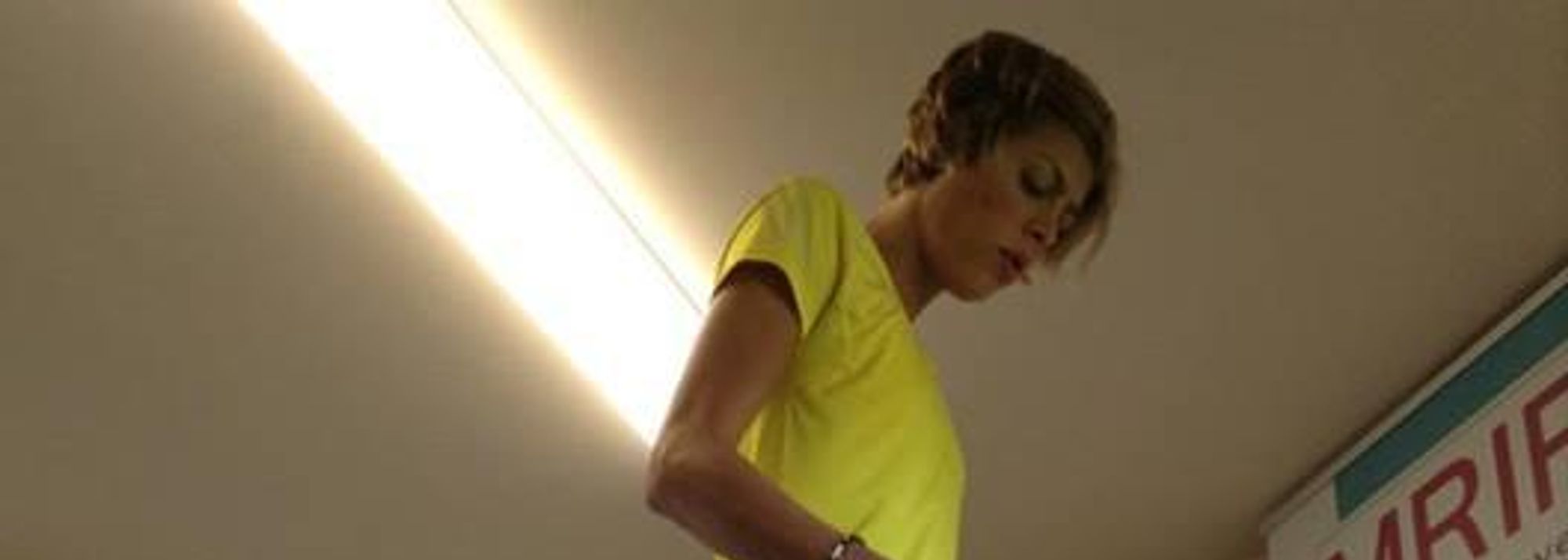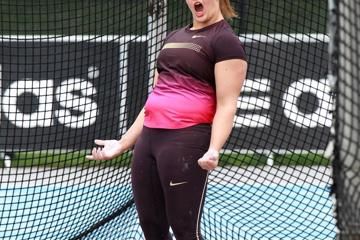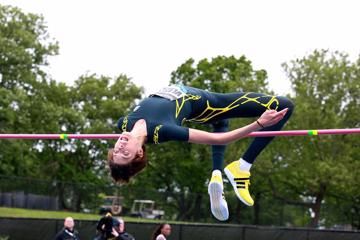Blanka Vlasic on the comeback trial in Carlow, October 2013 (© Anthony Geoghegan )
For Blanka Vlasic, the journey back to the being one of the best exponents of her art has begun in the most peculiar of places. Carlow: a small, sleepy town in south east Ireland.
It’s not somewhere you’d expect to find one of the greatest high jumpers of all time, and the 2010 World Athlete of the Year, but that is exactly where Vlasic has found herself for the past week, carefully nursing her body back to full health as she plots a return to the top in 2014.
Vlasic has struggled for the past two years with chronic pain in her left heel and Achilles tendon, but she is confident that she has now got to the bottom of the issue and, if all goes to plan, she hopes to be back in action in time for the 2014 IAAF World Indoor Championships.
“I’m really happy,” Vlasic says of her current progress, which is being overseen by Irish physical therapist Anthony Geoghegan at his clinic in Carlow.
“At this point everything looks good. I’m on the right track,” she added, looking ahead to next year’s championships, which take place in the Polish city of Sopot from 7-9 March.
The 29-year-old has struck gold twice previously at the World Indoors – in 2008 and 2010 – and she would dearly love to reclaim her title in 2014, though her immediate goals are admittedly focused on the day-to-day task of overcoming the injuries which ruled her out of both the London 2012 Olympic Games and the IAAF World Championships in Moscow this summer.
A final decision on attempting to win a third World Indoor title in Sopot – and a sixth appearance at the championships, in which she’s never been out of the top four – will hinge on her form closer to the event.
“I don’t want to rush it,” she said. “Once I come back, I want to be 100 per cent; not only 100 per cent healthy but also with good results. My subjective feeling will tell me what to do, when I’m ready.”
Persisting pain problem
Vlasic underwent surgery in January 2012 after a fragment of bone in her left ankle became embedded in her Achilles tendon, a problem which has caused her chronic pain when jumping ever since.
She returned to competition in May this year after a 20-month absence, making a triumphant come-back by winning at the IAAF Diamond League meeting in New York.
However, after the Diamond League meeting in Monaco on 19 July, she found herself unable to walk the following morning, such was the pain in her left heel, and she was subsequently forced to withdraw from the World Championships.
“It’s been a really painful year,” she reflected.
“My heel has been really painful for the last two-and-a-half years. It was bothering me the whole of last season, that’s why I couldn’t perform at my usual level. I wanted to come back so bad though because I was getting really sad being away. I’m happy I did those meets because I broke this period of stillness and my confidence came back. I saw it’s not impossible to jump again.”
Indeed, it was only during her absence from the track that Vlasic came to appreciate just how much she loved athletics, and how much fans of the sport missed her presence.
“I’m happy that I was missed, for sure. I also missed them. You don’t know how much you miss it until it’s taken away from you, but I think that we all need to be taken away from the things we love the most and we are, usually, at some point. You learn how to appreciate it more.
“I probably did more damage than good by jumping this season, because it’s a huge stress. After Monaco, I just knew I couldn’t jump in Moscow. I decided it’s better to get healthy now than to go there and force it, and maybe then my career could have been in jeopardy.
“It’s not a good feeling. It’s made me much stronger in the head, though. Before, I didn’t know in my mind that I could handle all of this, but now my desire is so strong.”
Long term targets
“This injury has helped me in terms of motivation,” she added. “It woke me up. I feel like I’m in the beginning of my career again, and that’s a good thing. I think that my career can last a really long time because I have really good coaches.”
What has kept Vlasic motivated through hard times is her unshakable belief that she has yet to reach her potential in the High Jump, despite recording the second highest outdoor jump of all time with her 2.08m clearance from Zagreb in 2009.
“That’s the thought that keeps me going. I still feel in my heart that there are things I need to do, that I didn’t jump my maximum. I’m going to be 30 in a month, but even now we still have things we haven’t done yet in training. There are still places we haven’t been and we need to reach to improve.”
Since beginning to work with Geoghegan, Vlasic is already starting to see positive results.
“We’re doing shockwave therapy three times a day and lots of general conditioning work, exercises using flexibands, and on a strength and conditioning board.
“There are still some irregularities in the heel bone. It’s very rough and we are trying to smooth that out so it doesn’t bother the Achilles. The treatment is very painful, but I’m handling it really well.”
Looking to the future, the Croat can’t help but grow excited when she thinks of returning to the major stadiums and meetings where her star has shone so brightly in recent years.
The good news for athletics fans is that when she does return, Vlasic intends to retain the same exuberant, heart-on-your-sleeve attitude which has made her so popular with the public.
“The beauty of our people, human beings, is that they can express emotions and you can read so much from their expressions.
“You tell the story without even saying any words. After the jump, I want to tell the story. I want to tell the crowd how I feel. If I’m sad, I’m not ashamed of those feelings. If I’m happy, I’m going to dance, I’m going to fool around, and it brings us closer together.
“The crowd come to see that, also. They don’t want to see robots. It’s what I missed most when I was injured: the rush, the adrenaline that comes with competition. It’s a really exciting sport, a great sport, and it brings so much passion into your life.”
Cathal Dennehy for the IAAF






